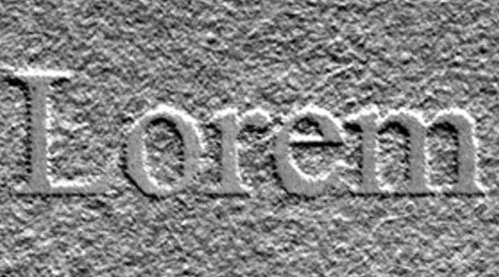Fingerprinting Blank Paper Using Commodity Scanners
Proc. IEEE Symposium on Security and Privacy, May 2009

Surface Texture of Paper as Measured by Desktop Scanner. Text in Times New Roman 12pt font shows scale.
Abstract
This paper presents a novel technique for authenticating physical documents based on random, naturally occurring imperfections in paper texture. We introduce a new method for measuring the three-dimensional surface of a page using only a commodity scanner and without modifying the document in any way. From this physical feature, we generate a concise fingerprint that uniquely identifies the document. Our technique is secure against counterfeiting and robust to harsh handling; it can be used even before any content is printed on a page. It has a wide range of applications, including detecting forged currency and tickets, authenticating passports, and halting counterfeit goods. Document identification could also be applied maliciously to de-anonymize printed surveys and to compromise the secrecy of paper ballots.
Paper
- PDF (1.3 MB)
Citation
William Clarkson, Tim Weyrich, Adam Finkelstein, Nadia Heninger, J. Alex Halderman, and Edward W. Felten.
"Fingerprinting Blank Paper Using Commodity Scanners."
Proc. IEEE Symposium on Security and Privacy, May 2009.
BibTeX
@inproceedings{Clarkson:2009:FBP,
author = "William Clarkson and Tim Weyrich and Adam Finkelstein and Nadia
Heninger and J. Alex Halderman and Edward W. Felten",
title = "Fingerprinting Blank Paper Using Commodity Scanners",
booktitle = "Proc. IEEE Symposium on Security and Privacy",
year = "2009",
month = may
}